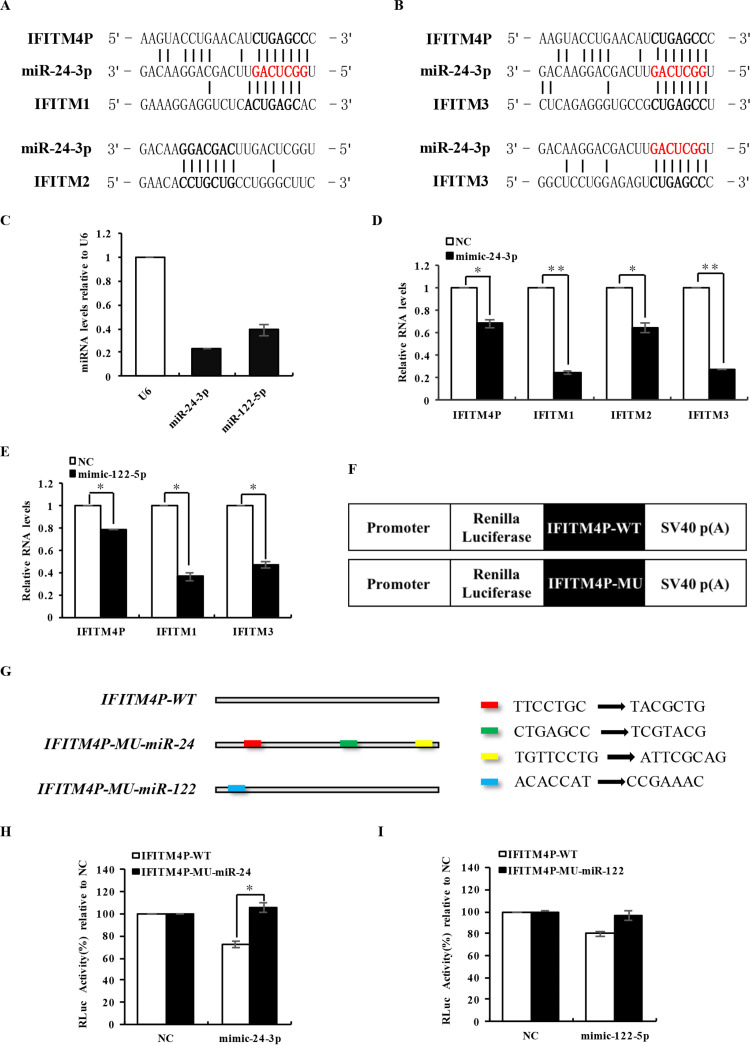FIG 5.
lncRNA IFITM4P is a target of miR-24. (A and B) Shown are sequences of miR-24-3p binding sites in lncRNA IFITM4P, IFITM1, IFITM2, and IFITM3. (C) Levels of miR-24-3p and miR-122-5p were examined by qRT-PCR and compared with U6 in A549 cells. (D and E) A549 cells were transfected with negative-control and mimic-24-3p (D) or mimic-122-5p (E), the synthetic simulant of miR-24-3p or miR-122-5p. RNA levels of IFITM1, IFITM2, IFITM3, and lncRNA IFITM4P were examined in the A549 cells by qRT-PCR. (F) Wild-type lncRNA IFITM4P (IFITM4P-WT) or its mutants (IFITM4P-MU) were cloned downstream of the Renilla luciferase gene in the vector pRL-TK. A schematic diagram shows constructs generated for luciferase assays. (G) Shown is a diagram for the mutation sites of miR-24-3p and miR-122-5p response elements in lncRNA IFITM4P. (H and I) miR-24-3p response element-mutated lncRNA IFITM4P (IFITM4P-MU-miR-24) and miR-122-5p response element-mutated lncRNA IFITM4P (IFITM4P-MU-miR-122) in pRL-TK vector were, respectively, transfected into 293T cells, together with mimic-24-3p (H), mimic-122-5p (I), or the negative-control mimic (NC). The luciferase assay was performed as described in Materials and Methods. Data represent mean values ± SEM (n = 3; *, P < 0.05; **, P < 0.01).

